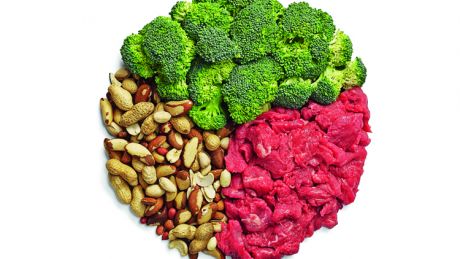The If It Fits Your Macros (IIFYM) diet
Nutritionist Drew Price follows the IIFYM diet plan for a month to see if it's as effective as it's creators claim

The diet
If It Fits Your Macros (IIFYM) is a flexible diet that focuses on how much you’re eating rather than the quality of the food. You work out a daily target intake of three macronutrients – protein, carbs and fat – and as long as you stick to those targets, you can eat whatever you want.
The claim
IIFYM promises fat loss while giving you the flexibility to eat out with friends or enjoy a takeaway. The theory is that getting your macronutrient ratios right is the key to optimum body composition results, rather than stressing too much about how ‘clean’ your food intake is. All you have to do is work out and stick to your targets.
The method
If you like maths, you’ll love IIFYM. First you go to iifym.com and use its tools to calculate your overall calorie target based on your weight, height and age, then work out how those calories should be divided between the macronutrients depending on your goals. Then the emphasis is on you to keep track of what you’re eating throughout the day. If that sounds like a pain, well, it is, although apps such as MyFitnessPal can make it more straightforward. You also have the option to factor in a recommended daily intake of fibre, but this makes it harder to hit the targets.
The reality
To lose weight I calculated I’d have to stick to 205g carbs, 65g fat and 190g protein a day, with an optional 35g of fibre. Tracking my daily food intake was a grind and my enthusiasm soon dwindled, especially in situations where I had to weigh individual ingredients – no one should have to take a pair of scales on a stag do! I also ended up eating the same, easy-to-measure meals all the time to make things more straightforward, so my dietary variety suffered.
Having initially attempted to include fibre in my calculations – mainly by having lots of low-calorie broccoli with every meal – I soon caved and went for the all-junk option. While it was fun for a while, it didn’t do my skin or digestive health any favours, and I also noticed my mental and physical performance take a nosedive.
The results
Having eaten so much crap, I was surprised to see positive changes in the mirror, which were backed up by my Speedflex body composition results. In fact, despite opting for a weight loss version of IIFYM, I gained 2kg over four weeks thanks to an increase in muscle mass that I attributed to my higher protein and carbs intake. I also reduced my body fat percentage, although the results did flag up a rise in levels of visceral fat – the nasty stuff that gathers around your organs and can cause heart disease, diabetes and cancer – which was not ideal.
The verdict
There’s nothing fun about counting macros but IIFYM does offer two powerful tools: a defined guideline of exactly how much to eat, and a framework that allows you to relax and enjoy yourself when ideal food choices aren’t available or wanted. If you’re planning on using it over a long period, though, you’re better off using predominantly clean foods to hit your macronutrient targets to avoid broader health issues caused by an over-reliance on junk food.
Get the Coach Newsletter
Sign up for workout ideas, training advice, reviews of the latest gear and more.
Drew Price is a nutritionist and a former columnist for Men’s Fitness UK, which predated, and then shared a website with, Coach. He is the author of the The DODO Diet. He holds a masters degree in nutrition science from Western Sydney University, and holds certifications from the American College of Sports Medicine and the National Strength and Conditioning Association. In 2022, he is a doctoral researcher at Reading University.









